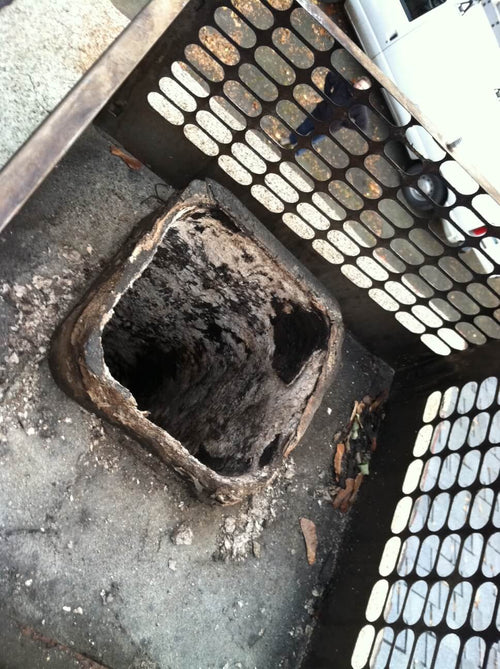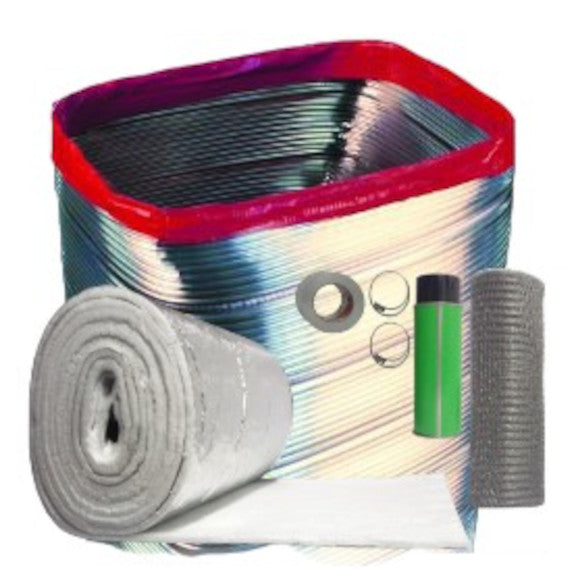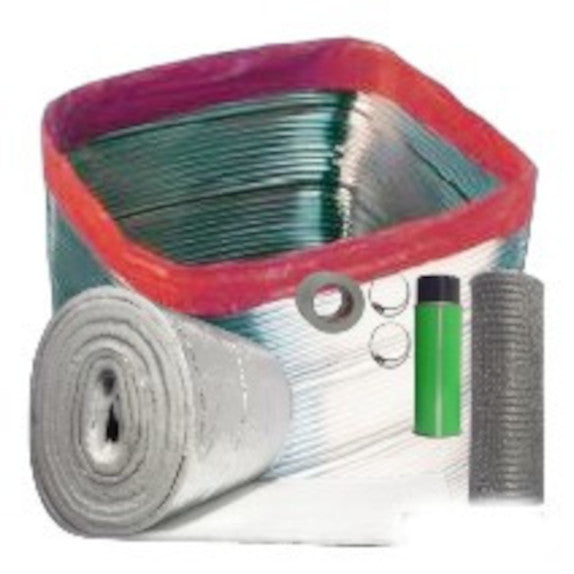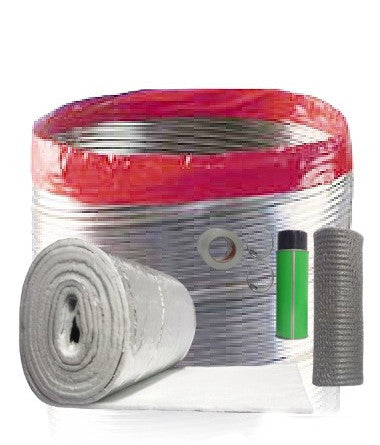Benefits of Chimney Liner Insulation - Do I Need to Insulate my Liner?
July 19, 2023

Having an insulated chimney plays an important role in any chimney construction or modification. When installing a new liner for your heating appliance — whether it is a furnace, hot water heater, wood-burning insert or stove, or existing fireplace — consider insulating the liner. Chimney liner insulation offers many benefits in terms of improved system safety, increased efficiency and reduced maintenance cost, and in just a short period of time could pay for itself. By keeping combustion gases hot until they leave the flue, your insulated chimney liner will accumulate less moisture and creosote. Ultimately your appliance will burn more efficiently, the liner will have less creosote deposits, and fewer cleanings will be needed than with uninsulated liners, saving time and money.

A flue full of creosote.
Relining Masonry Chimneys
Masonry chimney flues are not insulated, unless an insulated liner has been installed. Outside chimneys are more susceptible to the cold than chimneys built within the walls of a house. Inside chimneys may only need insulation in the area that extends above the top of the roof, or inside an uninsulated attic, since the remainder of the flue is surrounded by an insulated house.
Wood burning applications are where the greatest returns can be found. Creosote is an oily substance that accumulates inside the flue. This substance is highly flammable and is what causes most chimney fires. Creosote mostly develops when burning wood in cold chimneys, so one of the best ways to reduce the buildup of creosote is by installing your liner with insulation. Insulation will keep flue gases warmer, minimizing condensation and creosote build up, while providing greater draft performance. A well maintained and insulated chimney liner can also prevent extreme heat from a chimney fire from spreading through your chimney's masonry structure and possibly into your house or attic where it could ignite combustible materials.

This corroded flue needs a liner and insulation
UL Listed Chimney Liners
Only UL Listed stainless liners with the necessary insulation will meet the zero clearance to combustibles requirements for UL1777. There are two types of insulation available to provide this safety for your home. The first is the blanket wrap. It is available in a 1/4" or 1/2" thickness; UL1777 requires a 1/2" total thickness. This insulation is wrapped around the liner before installing the liner into the flue, and will add approximately 1.5" to the overall dimensions of the liner. This is important to keep in mind when installing liners into smaller flues. The second is a vermiculite and concrete insulation mixture, which is combined with water and poured down between the liner and flue walls. Some prefer this method, and this option works well when trying to insulate a liner in a tight fitting flue.
If you have an oil or gas furnace, the exhaust that is produced typically has lower temperatures, since some of the heat is extracted for warming the house, and the exhaust gases will form condensation when they cool in the flue area. In the newer high efficiency furnaces, very little heat is exhausted and more of the corrosive condensation is formed. A chimney flue that is not insulated will have a draft that is less efficient due to the colder temperatures. Hot air rises, and as it cools the draft is reduced. Insulating an oil or gas flue liner will lessen the amount of corrosive condensation by keeping the gases warmer, giving it a better draft. Since furnace appliances need relatively small flues, if you are venting into a chimney with a clay liner, it's probably too large, which is already cooling the gases and deteriorating the clay liner and mortar with the corrosive condensation — just another reason for having an insulated stainless liner.
Installing a Chimney Liner + Insulation
If your chimney flue is not insulated, whether you are venting a furnace or wood burning appliance, the easiest and most economical solution is to install an insulated stainless steel chimney liner inside your existing flue. By wrapping the liner with insulation before you insert it into the flue, both tasks can be accomplished at the same time, or you can install the liner first and then add the pour down insulation into the space between the liner and the chimney flue.
Just as important is to select the proper diameter liner. This can usually be determined by BTUs (or check the manufactures instructions for a furnace) and the cross sectional area of the fireplace opening, or by matching the exhaust size of the wood insert or stove.
DIY Center
(AKA ‘The Rockford Files’)
From video tutorials to product walkthroughs, we have a variety of DIY resources just for you! Click the button below to view our entire library.








